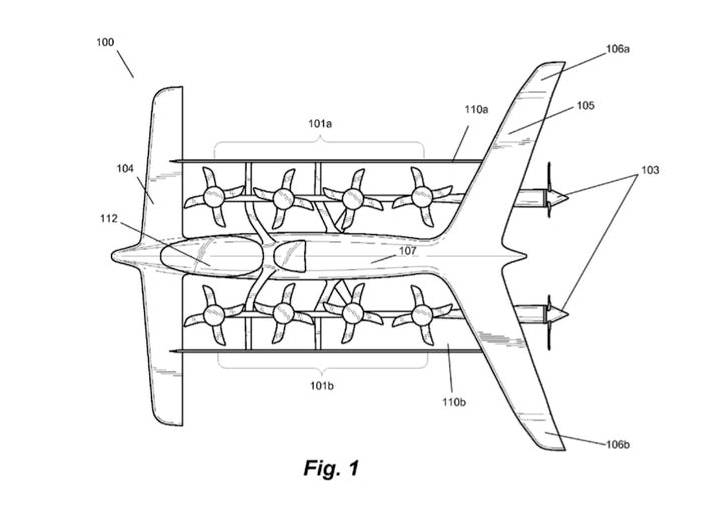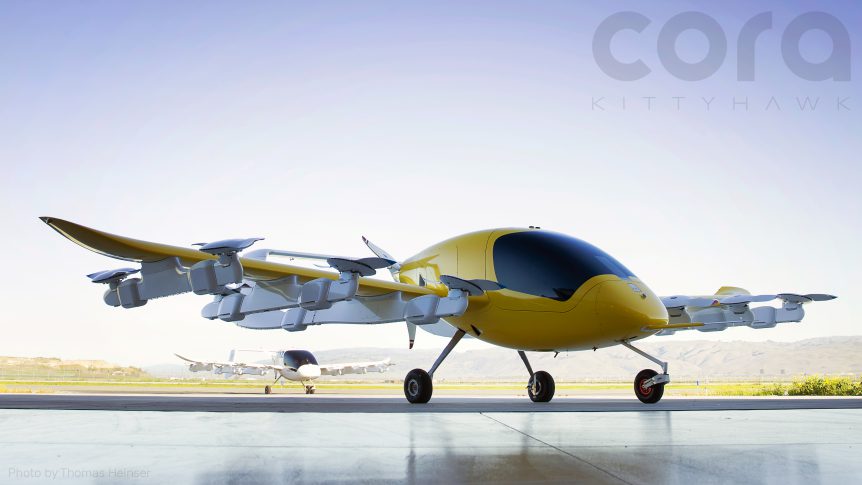While Eviation’s Alice is drawing adulation for its initial test flight, Kittyhawk, a one-time front-runner and pioneer is quietly closing down. A vision of Larry Page, Sebastian Thrun, and Ilan Kroo, Kittyhawk brought us several approaches to personal green flight, with a heavy emphasis on intuitive control and automated flight. One of its many approaches lives on, though, through sister company Wisk. Blooper Reel Kittyhawk’s earlier efforts look somewhat like an aeronautical blooper reel, one of those montages of early flying machines that evoke laughs when shown as preludes to more serious stuff in movie theaters. Kittyhawk, though, avoided crashes and humiliation. The firm explains its history: “Kittyhawk was founded in 2010 by autonomous car pioneer Sebastian Thrun with the backing of Google co-founder Larry Page to explore the frontier of then-new eVTOL aviation.” From Zee to Kittyhawk Originally founded as Zee Aviation, Kittyhawk was secretive, with only glimpses of its potential aerial vehicles surfacing as “spy shots.” The ZP-1 …
Zee? Kitty Hawk? Cora?
Different Names, Different Configurations Zee, One of two aircraft companies funded by Google founder and CEO Larry Page, has been a highly mysterious business. Its web pages mostly gave discrete job descriptions for those willing to sign up for a mostly undefined mission. Occasional glimpses of patent drawings, spy shots of a multi-rotor craft in Google’s Mountain View, California parking lot came into view, and later, in-flight shots of other, different looking craft came from Hollister, California. Kitty Hawk, the other company funded by Larry Page, seems to have subsumed Zee and produced a 12-rotor, single-propeller aerial taxi about the size of a Cessna 150, but capable of vertical takeoffs and landings and seamless transitions to forward flight. A white example has flown at Hollister airport and a yellow version at a field in New Zealand. An Almost Epic Journey The intellectual, physical and geographical journey of this craft is almost epic, and seems to have resulted in a 13-motored …
A Twin-Motored Ultralight Flying Wing – It’s the New Millennium
Richard Glassock, an Australian now living and working in Hungary, sent the links to YouTube videos of a Millennium hang glider, neatly electrified and flown at this year’s Santa Cruz Salt Flats Race. Richard has been a speaker at the Electric Aircraft Symposium with a talk on his efforts with small hybrid electric power systems for large-scale models and small aircraft. Steve Morris, co-designer of the Millennium along with Ilan Kroo, Brian Porter, Brian Robbins, and Erik Beckman helped develop this rigid-wing hang glider to offer a lighter, more portable version of Swift. Steve reported on his electric-powered Swift at the 2010 Electric Aircraft Symposium. Ilan Kroo reflected on the idea of practical, powered ultralight sailplanes in his American Institute of Aeronautics and Astronautics paper on the design of the Swift. “With refinements in aerodynamic control and composite structures, hang gliders will continue to evolve toward more soarable foot-launched sailplanes. If one does not constrain the designs to be able …
Airliners Get Better Mileage than Cars, and Trains do Even Better
Airliners beat cars in fuel economy, especially on longer trips. That would not be news to attendees at recent Electric Aircraft Symposia, where speakers like Ilan Kroo, Stanford University professor and aircraft designer, have brought that message home. One of Kroo’s slides, shown below in a 2009 lecture (It’s nearly an hour, but worth a look and listen), lists a “narrow-body” airliner (in this case a Boeing 737-800) as able to fly one passenger coast-to-coast on 29 gallons of fuel, at about 81 passenger miles per gallon. A person carpooling his or her four-passenger Prius and driving responsibly could beat that (although not in the five hours required for the jet to make the total flight), but most trips are solo affairs, especially during commutes. Not anywhere near Green Flight Challenge efficiencies (403.5 ppmg for the winning Pipistrel G-4), such economies are improving with more modern versions of fuel efficient airliners. Cars are also gaining in fuel economy, prompted by government …
Unique, From A (for Aerodynamics) to Zee
Ilan Kroo, according to his biography page, is a Professor of Aeronautics and Astronautics at Stanford University, an advanced cross-country hang glider pilot, and designer of the Swift flying wing hang glider, unmanned aerial vehicles, a flying Pterosaur replica, America’s Cup sailboats, and high-speed research aircraft. Currently on a leave of absence from Stanford, he has started Zee Aero, “a bay area start-up company focusing on bringing new technologies to civil aircraft.” Zee Aero, on its first of five sparse web pages, proclaims, “We’re creating an entirely new aircraft,” a heady claim considering the lack of supporting descriptions or illustrations. But other sources have been made available, including Zee’s patent applications, which show a slim tricycle-gear fuselage surmounted by variously drawn structures holding eight upward-facing propellers and two propellers in the tail, apparently to push the whole assembly along. KGO television sent a news crew to Zee’s Mountain View headquarters, and broadcast nice views of the secure building in which …
Electric, Small, and Challenging
Dr. Ilan Kroo, a professor of aeronautics and astronautics at Stanford and designer of the Swift ultralight hang glider, among others, has a different kind of mission – that of reshaping small aircraft for the greatest efficiency. Lessons learned from light aircraft can be applied on a larger scale – but keeping it simple and light to begin with allows less expensive learning, according to Kroo. The outline for his presentation at the fifth annual Electric Aircraft Symposium in Santa Rosa, California on April 29, 2011 is instructive. He had three major topics, all repeating the title for his talk; “Design Concepts for Small Electric Aircraft.” The first topic emphasized the word, “Electric,” the second, “Small,” and the third, “Design Concepts.” First he discussed why electric aircraft are of interest, including their environmental impact, efficiency, reliability, energy source independence, and that fact that they are scalable – the latter being important to anyone also designing lifting body airliners. Modern airliners …
The Autonomous Swift
There were two presentations on the Swift ultralight flying wing at this year’s Electric Aircraft Symposium. Dr Steve Morris of the MLB Company related the flight testing of a manned version of the craft, which had been and is being modified by a group of NASA researchers. That NASA team presented material on the unmanned version of the Swift, as modified to allow autonomous flight. Three industrious and inventive souls, Corey Ipollito, Paul Espinosa, and Al Weston, presented their work on the Swift Unmanned Aerial System (UAS), which they are undertaking with a small team of experts as a mostly volunteer effort at NASA Ames Research Center at Moffett Field, California. Ilan Kroo’s famous design has had many variants, including several others electrically powered, but none quite as sophisticated, and none with the range of missions envisioned for the craft by this trio. The airplane, test flown in December 2009 by Brian Porter for MLB, carried its human payload for …


